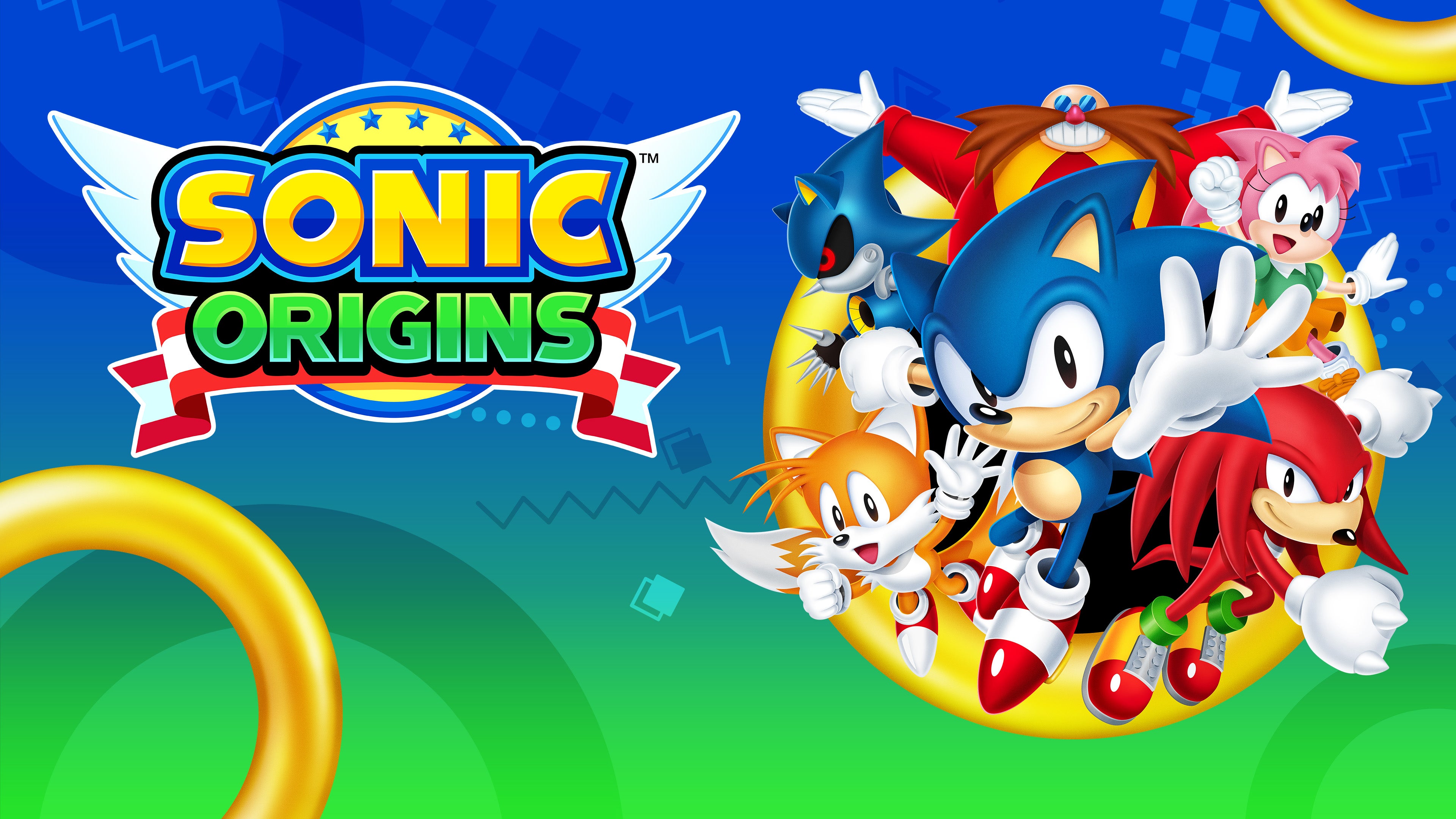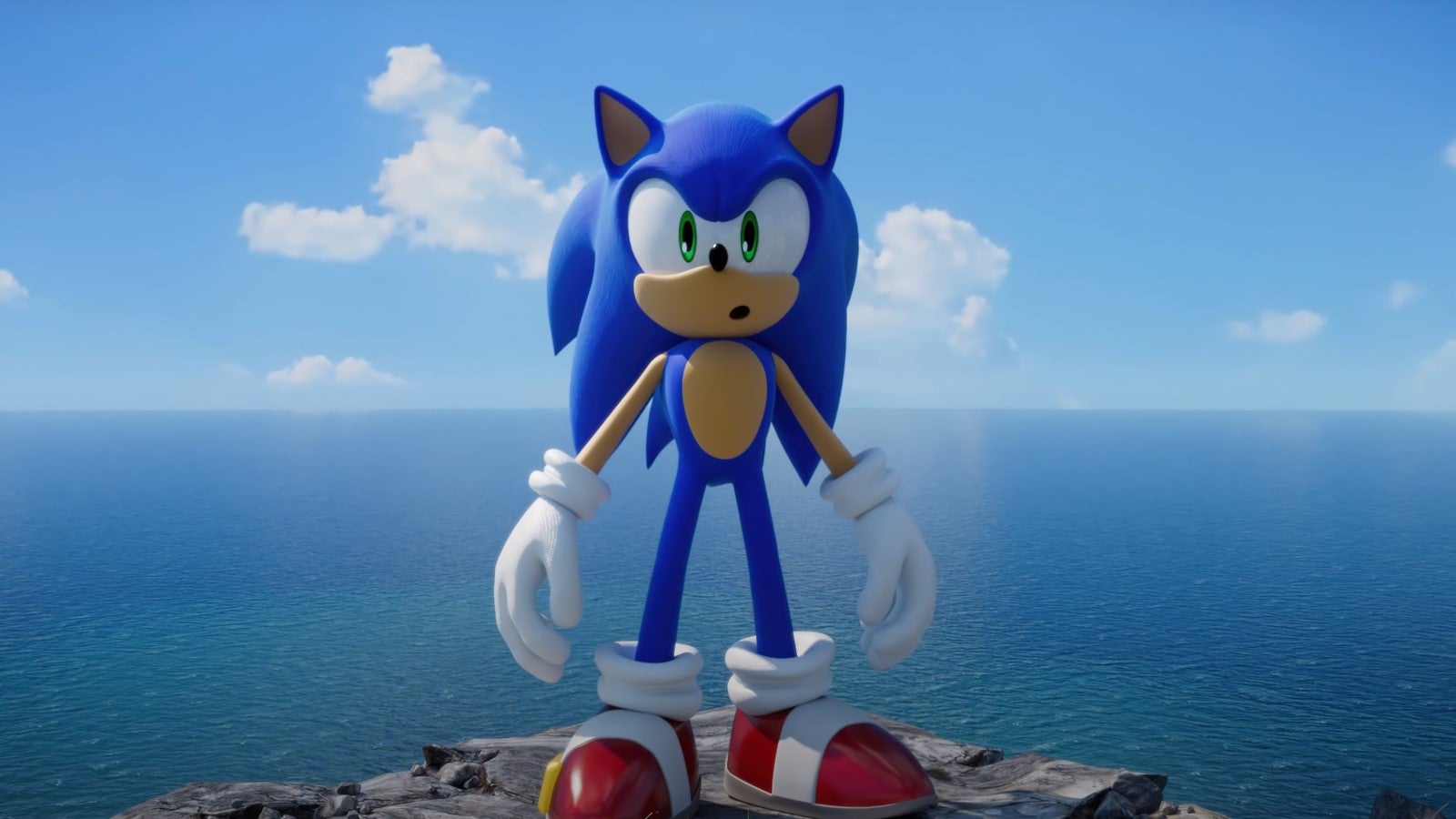Let’s face facts: the old Sonic games have been re-released more times than I’ve had hot dinners. And every single Sonic fan has bought every single one of them, such is our sheer madness. We’re a little spoiled on PC for Sonic content these days, with every recent game of note having its own PC port that’s immediately been modded from bottom to breakfast. But it wasn’t always this simple, oh no. It used to be pretty slim pickings for us Sonicsters, and I’m here to tell you what we fought through to get to the promised land of ports we bask in today.
Sonic The Hedgehog CD was the first game to hit our Windows 95 486’s in September 1996, a perfect fit for CD-ROM technology with its multiple soundtracks for each possible timeline. Surprisingly, though, it remained fundamentally the same exact game as it was back when it first released on Mega CD in late 1993. This, however, was a cheaper, more sensible way to play a somewhat “lost” Sonic game, orphaned by consumer apathy towards the Mega CD add-on. Finally, though, it had a new home – one where it ran in a rather small desktop window, so Sonic could finally meet your Bonzi Buddy.
It was still brilliant, of course; Sonic CD is one of the very greatest Sonic games and quite certainly the most misunderstood. It’s a game about exploration for the simple joy of finding cool stuff, one where you’ve got to travel back in time to find a generator placed by the evil Doctor Robotnik. This means finding a “Past” signpost, then locating a spot where you can accelerate uninterrupted until you burst back in time, emerging in a more peaceful zone where Robotnik’s plan has yet to be realised. Desroy the generator and you guarantee a “Good Future” and can leave the zone. There’s also the option to head to the future so you can see the fruits of your labour, or explore a much more hostile “Bad Future” if you haven’t destroyed the generator. All totally optional of course, because that’s Sonic CD. It’s a game for people who aren’t in a hurry, which is a little antithetical to the Sonic ethos…
The teaching potential of Sonic The Hedgehog was finally realised with Sonic’s Schoolhouse, presenting a suite of edutainment so wretched that your kids will be begging you to let them do long division within minutes.
The very next month, the teaching potential of the Sonic The Hedgehog series was finally realised with Sonic’s Schoolhouse, a game that now calls to mind horror title Baldi’s Basics above all else, presenting a suite of edutainment so wretched that your kids will be begging you to let them do long division within minutes. You don’t even play as Sonic, instead choosing one of many nondescript animal characters to explore the various uninteresting mini-games on offer. These include a tiresome 3D take on the classic Memory game wherein you match poorly-rendered statues of Knuckles etc, and another where you run around a Doom-esque map collecting rings while Doctor Robotnik’s Badniks try to stop you. It has an educational value of zero, making it somehow less educational than actual Doom.
More importantly, the next actual Sonic game hit the PC in early ‘97 – and it’s a bit of a belter. Sonic & Knuckles Collection brought the most one of the most acclaimed Sonic games of all time to PCs. The combined Sonic the Hedgehog 3 and Sonic & Knuckles cartridges were a killer app for the Mega Drive, and now their glorious majesty could be experienced on your computer. Sort of.
There’s a rather interesting story behind the music in this port. While it’s presented as rather endearing MIDI recreations, the tunes are still the same arrangements you hear in the Mega Drive original. Until you get to the fourth stage, Carnival Night, at which point veterans will immediately notice that the song is very different. This continues across both the Ice Cap and Launch Base zones of Sonic 3, and the legendary detectives of the Sonic fanbase arrived at the conclusion that these songs were replaced due to a connection to Michael Jackson, who worked on the game’s soundtrack until initial accusations were brought against him, forcing him to leave the project.

Then, relatively recently, the legendary Hidden Palace team of game preservationists dug up a November 1993 prototype of Sonic 3 which – and I cannot stress enough how seismic this was – contained Mega Drive arrangements of those replacement songs, meaning those were always the originals, and we’d been living a lie for almost thirty years. PC stays winning. (The recently released Sonic Origins, which remasters Sonic 3 and uses the replacement tracks, prompted Sonic creator Yuki Naka to either joke about Jackson’s involvement or confirm it.)
Next in line, a little later in 1997, was a release of Sonic 3D Blast, Travelbuyer’s Tales’ isometric adventure that wasn’t really 3D at all – outside of its Special Stages which here resembled those of Sonic the Hedgehog 2, but with a 2D Sonic sprite borrowed from the Mega Drive version. These stages ran a little faster than the otherwise-superior Saturn port, too.
3D Blast is a decent time, and the addition of a save feature makes its long, difficult stages a more pleasant prospect. Moving Sonic through the isometric worlds, though, has none of the momentum-based freewheeling fun of its predecessors, or even the later Sonic Adventure. It’s not a bad game, but not one I can recommend rushing out to buy. Somewhat interestingly, the original developer of the Mega Drive version has released a Director’s Cut rom to “finish” the game, adding a load of extraneous features as well as a welcome ability to save. Worth a look.


The next year, Saturn racing title Sonic R hit the starting grid and brought its animal athletics to the PC. It’s a pretty enjoyable little game, with the sound of Sonic’s footsteps being essentially iconic to me. You race on foot with Sonic, Tails Knuckles, Aloysius, all the Sonic characters. With rings to collect, five big coins per track and Chaos Emeralds hidden in secret shortcuts et al, there’s a lot to enjoy on each course. The problem is there are only four of them, with a secret fifth that’s completely rubbish. It’s also remarkably easy to get the five secret coins and win each race, and the Chaos Emeralds aren’t especially taxing either. This unlocks a brace of secret characters, all of which have better stats than the default picks, meaning there is no reason not to use them.
Multiplayer’s a bust, single player is 100% complete in 90 minutes, tops. Is it a fun game? Certainly, but it’s obviously entirely too short and easy. The saving grace of Sonic R is Richard Jacques’ superb, hilarious eurobeat-style soundtrack. Incredulously, the budget release of Sonic R on the Xplosiv label initially omitted it for some reason, though it was reinstated in a reprint – look for orange text on the spine, rather than white.
Following these halcyon days of bizarre Sonic releases, the PC world started to see slightly more sensible and contemporary ports in the likes of Sonic Adventure DX, Sonic Heroes and Sonic Mega Collection Plus. The Wild West was over; Sega were behaving and offering the full-featured likes of Sonic Adventure DX, an overhauled and glitch-filled take on the still-wonderful Dreamcast epic Sonic Adventure. It incorporated a brand new Mission Mode that allowed you to collect even more Emblems and ultimately unlock a batch of Game Gear titles, none of which are particularly good (with the exception of the rather graceful and just plain nice little explore-’em-up, Tails’ Adventure.)

Sonic Heroes on PC is probably the best way to play the game, but it hasn’t made its way to Steam at the time of writing. Sonic Mega Collection Plus would be a good compilation if not for the absurd requirement to unlock many of the games included; maybe a quick .ini edit would fix this, but it’s still not getting a recommendation from me.
In the modern era, though, it seems like most Sonic games hit Steam, including some that land completely unexpectedly – former Wii U exclusive Sonic Lost World was an arguably pleasant surprise. With the upcoming Sonic Frontiers slated for the platform too, it seems that we’re in a bit of a golden age for Sonic fans on PC. It’s a little disappointing, though, that Sega have decided that new release Sonic Origins is now the defacto means by which the classic Sonic games must be played; the individual releases have been removed from Steam entirely. And thanks to Origins’ changes to the classic soundtrack of Sonic 3, it’s a stretch to call this new version definitive. 16:9 widescreen for Sonic 3 & Knuckles is nice, but that’s existed for a good while in popular fangames Sonic 3 Angel Island Revisited, which adds a brace of options for really obsessive fans.
And let’s face it, when it comes to Sonic fans, that’s literally all of them. No more committed, creative fanbase exists on the planet. PC has been a welcome home for Sonic the Hedgehog for quite some time, and long may it continue. If a game sucks, you can just wait for the mod.
